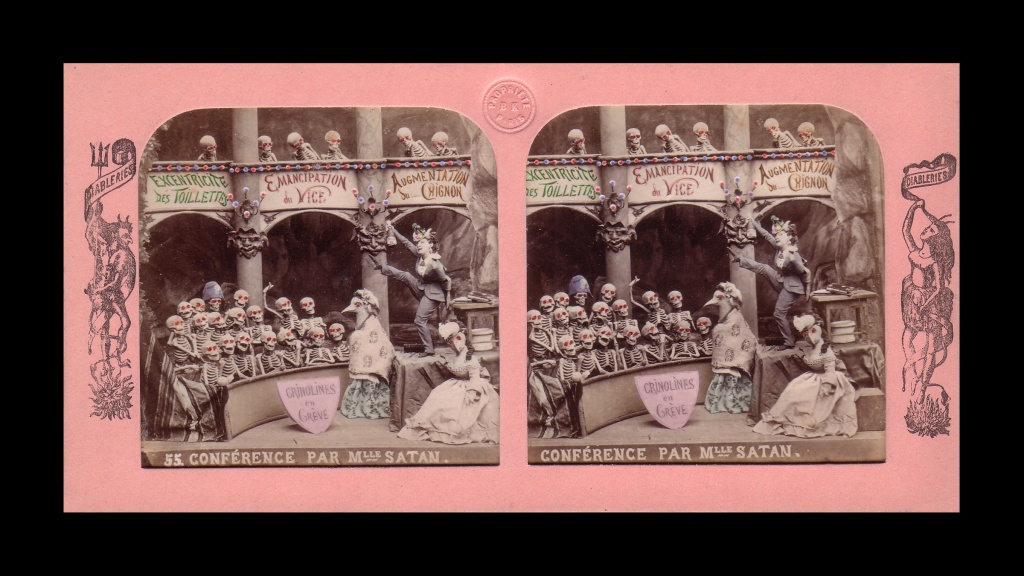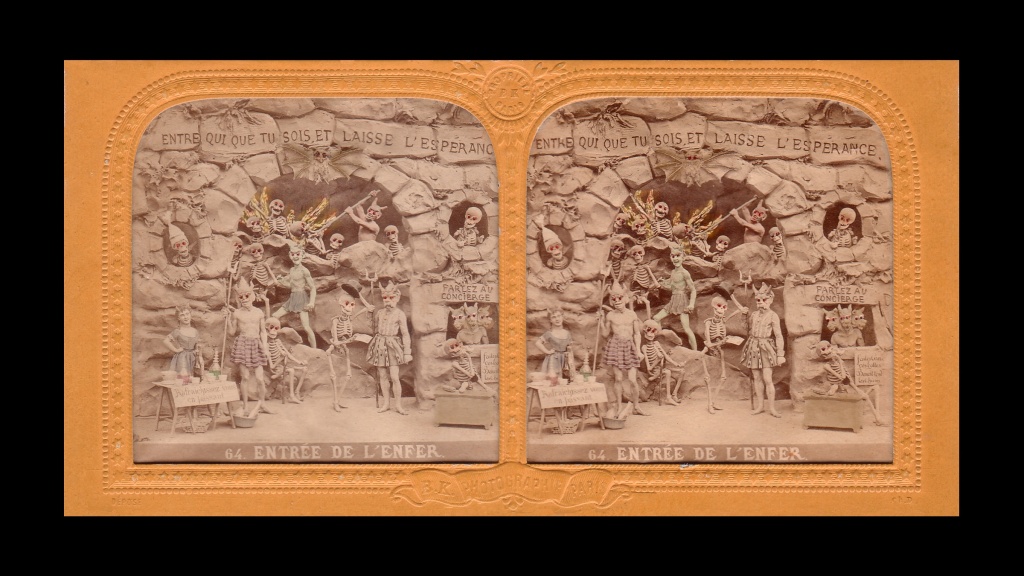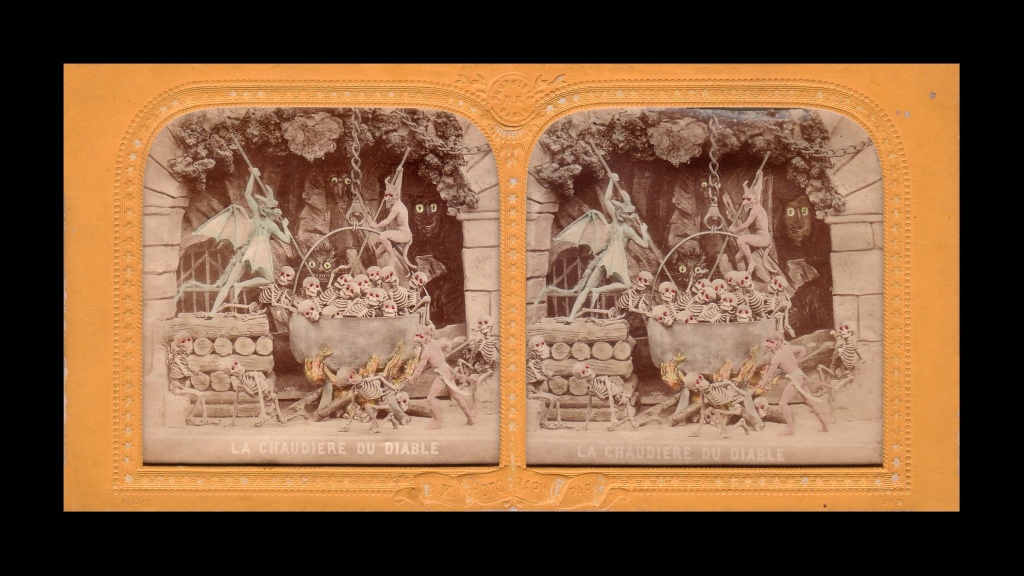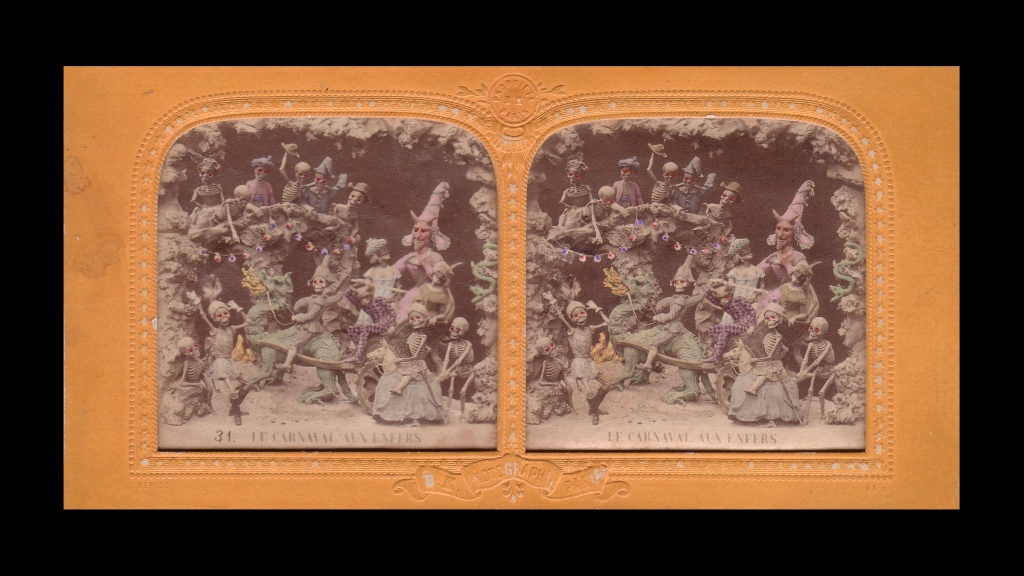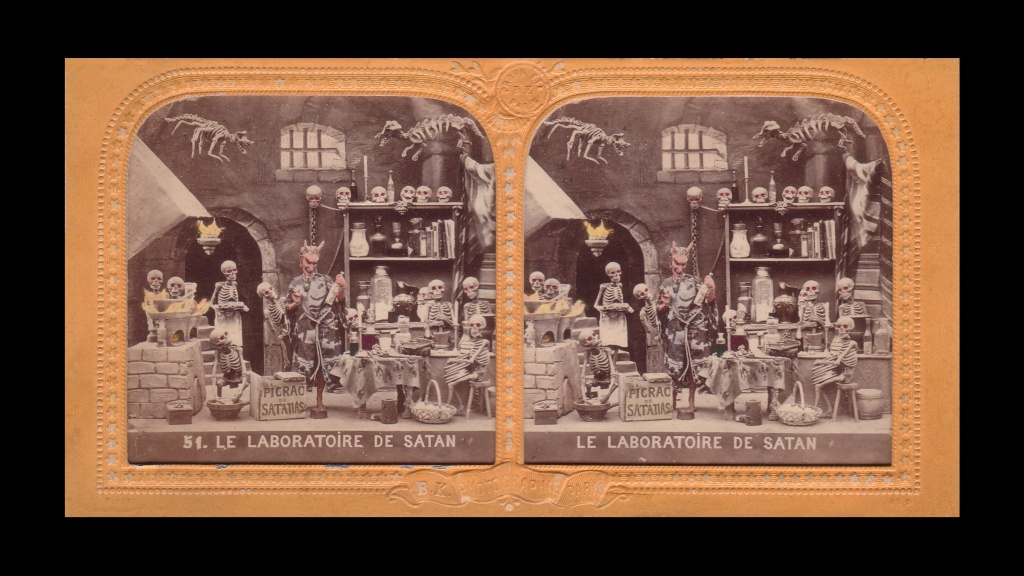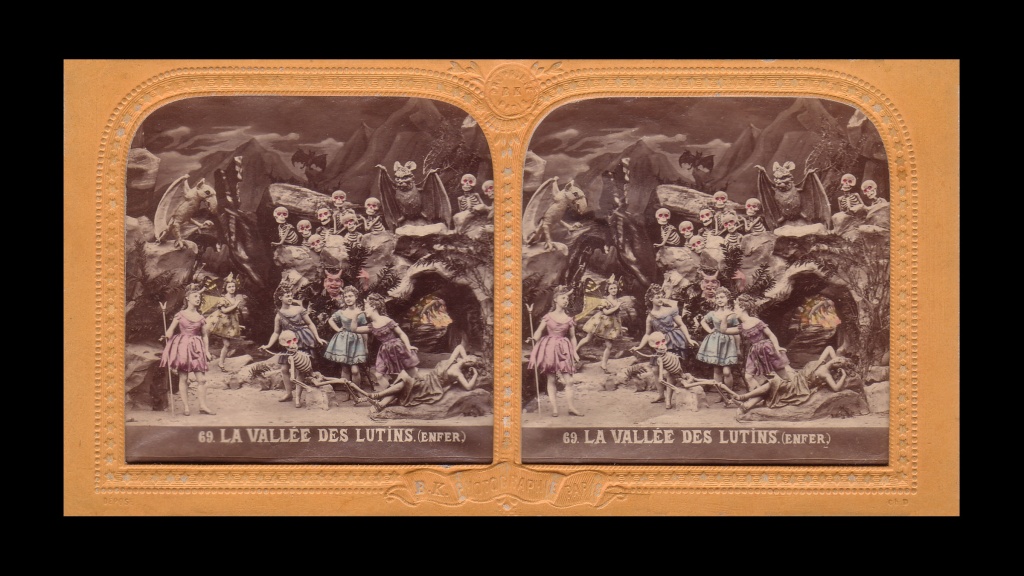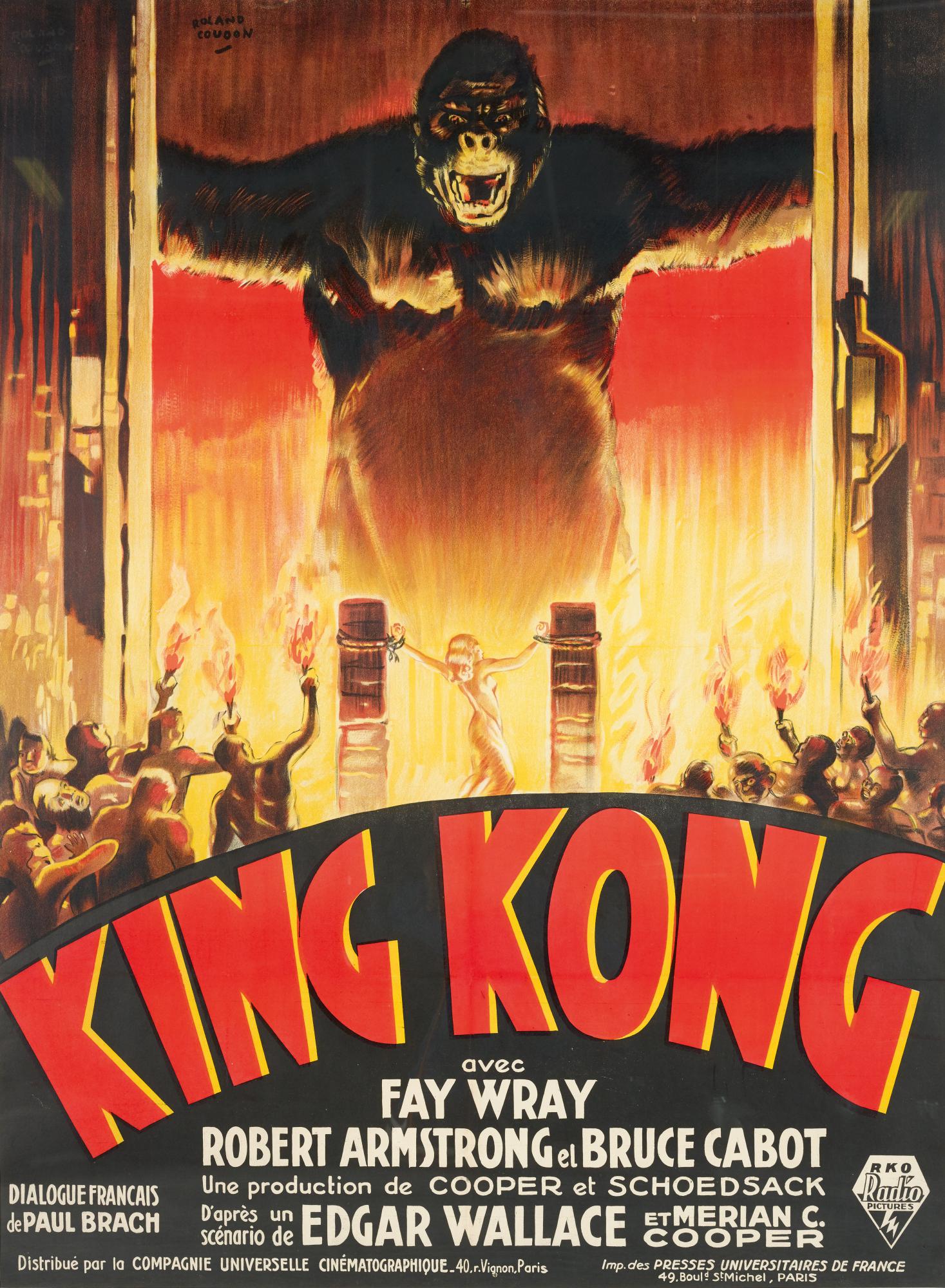





A collection of more than 40 original hand painted watercolor and gouache on paper costume illustrations, circa mid-nineteenth century, created chiefly by Paris Opera costume designer Alfred Albert. The costumes depicted are primarily from the Goignard brothers production of “La Biche au Bois,” which was a popular French fairy tale (or feerie) involving mystical realms, including an underwater kingdom populated with anthropomorphic sea creatures. The collection is housed in a typical late 19th century era scrapbook album and unfortunately suffers from severe foxing and discoloration due to acid and other impurities in the papers and chemical reactions with the glue used to secure the sheets to the scrapbook.

